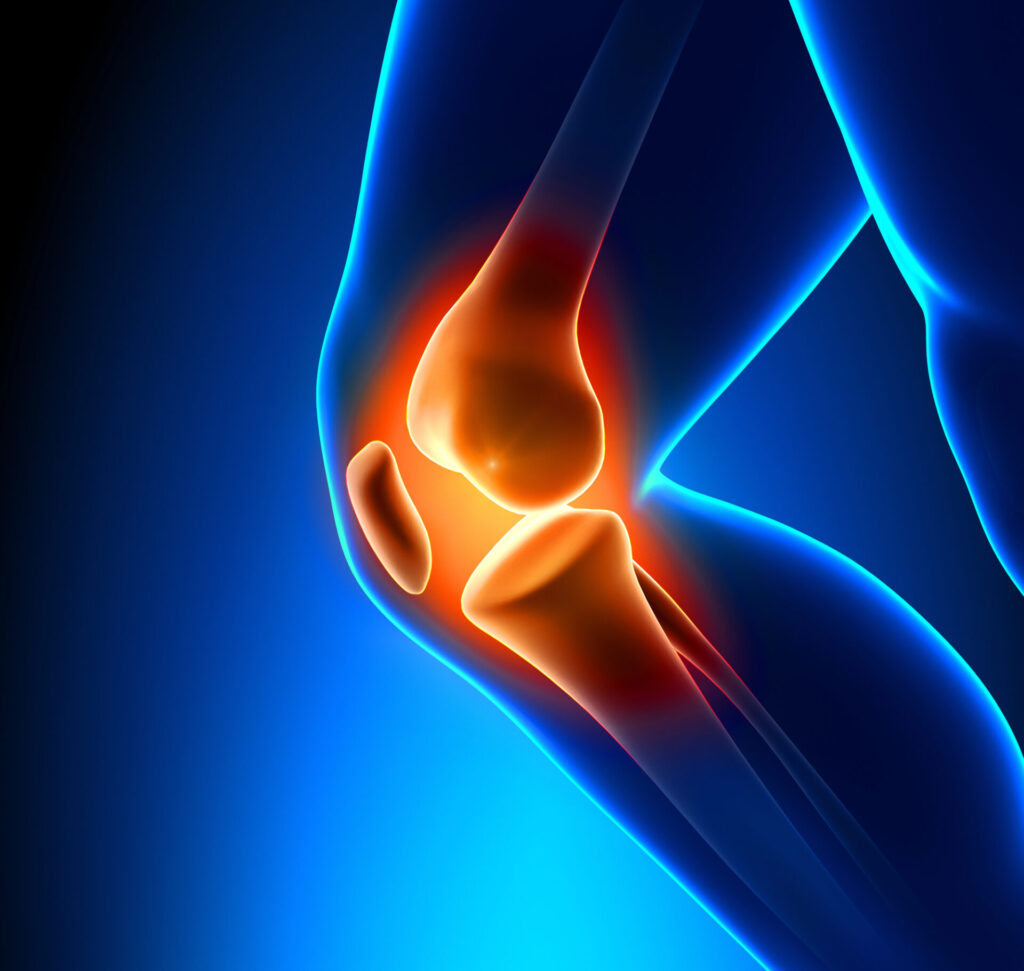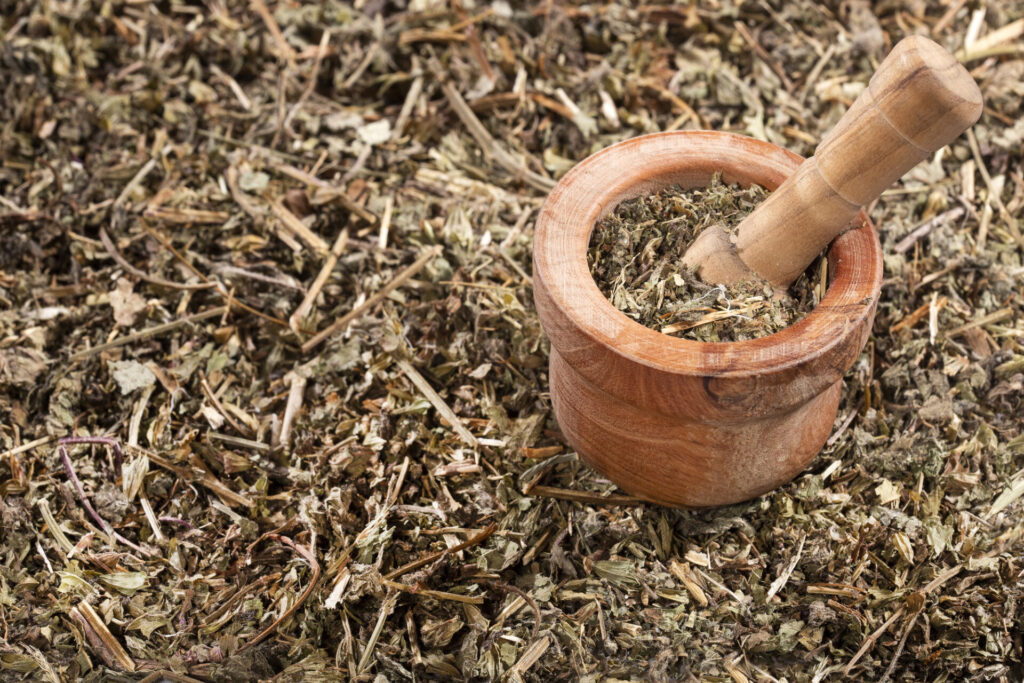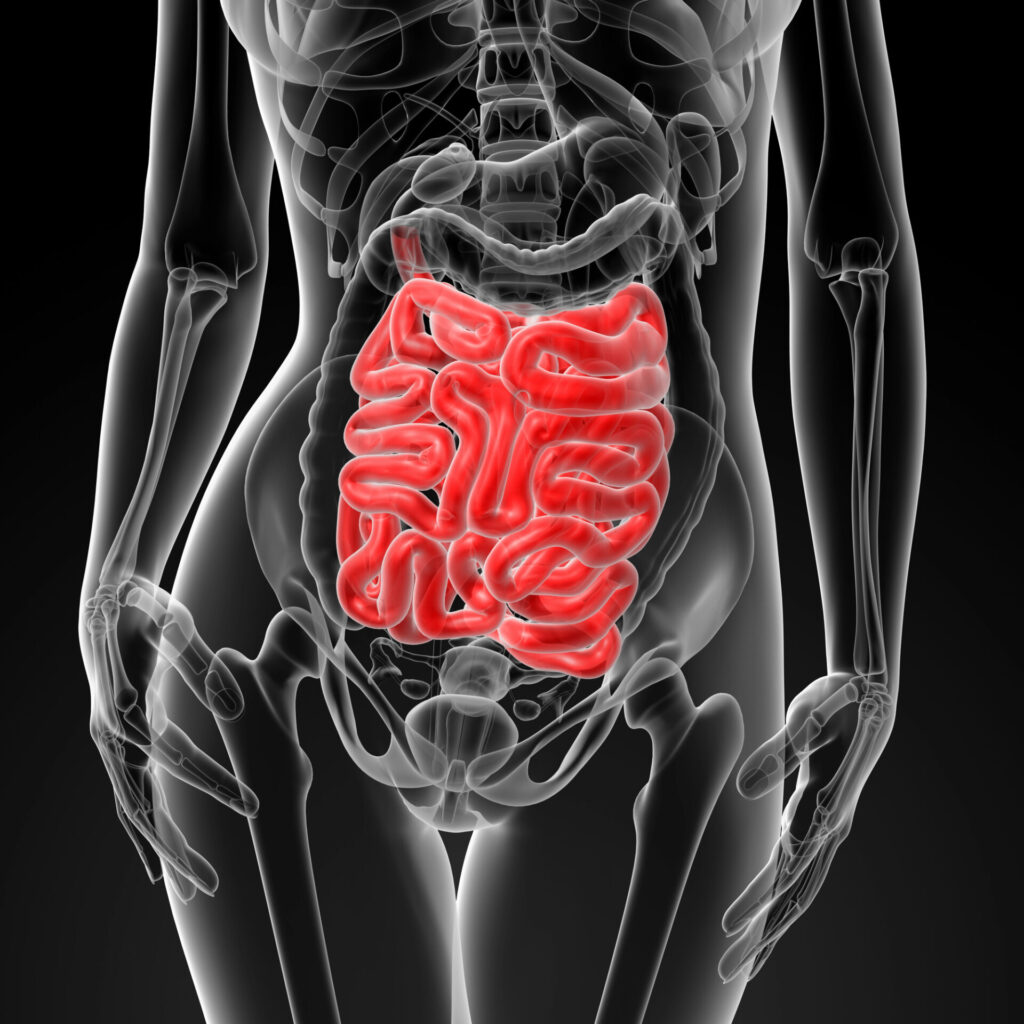An evidence-based protocol can ease aches and pains, tame inflammation, and help active patients stay in the game.
All active patients, from weekend warriors to aging athletes, face a variety of physical challenges, ranging from shifts in muscle mass and flexibility to declines in bone density and cardiovascular output. The most pervasive and frustrating complaint: joint problems and pain significantly impair performance, fitness and well-being. Here’s how to help your active patients stay in the game.1, 2, 3, 4
Joint pain, inflammation and osteoarthritis.
Degenerative joint conditions, like osteoarthritis, are extremely common, affecting an estimated 58 million adults. Characterized by articular cartilage degeneration and synovial low-grade inflammation, osteoarthritis is marked by chronic pain, stiffness, diminished mobility and muscle weakening, and over time, an increased risk of falls, fractures, obesity and diabetes. And while joint problems become more prevalent with age, they’re not confined to older populations—younger patients, especially athletes, also suffer from osteoarthritis, inflammation and persistent joint pain.5, 6, 7, 8
Conventional treatment options generally center around surgical techniques and pharmaceuticals, including NSAIDs and opioid medications. But these are associated with significant adverse effects and do little to stem the progression of joint disorders. With few safe, sustainable options, research is focusing on natural interventions for relieving pain, protecting joints from damage and improving function.
“To support joint fitness, it’s ideal to curb joint pain before it occurs by nourishing the joint tissue on a regular basis,” says Céline Torres-Moon, Senior Scientist, NOW Health Group Inc. “Once pain occurs, having a consistent supplement regimen in place that targets the underlying mechanisms of the pain will lead to the best results.”
A comprehensive approach that blends nutrition, lifestyle and science-backed supplements can help your active patients stay that way. Here’s what the evidence shows.9, 10, 11, 12
Diet and nutrition.
Diet is considered a primary modifiable factor for reducing inflammation and supporting joints, and dozens of studies confirm the effectiveness of nutritional interventions. Typical Western eating patterns drive inflammation, and research links a diet high in processed and red meat, fast foods and refined grains, with a greater risk of osteoarthritis and joint pain. Conversely, a whole-foods, plant-based diet is associated with lower levels of inflammation, and increased consumption of vegetables, legumes, fatty fish, fruit and whole grains has been shown to minimize inflammation, improve joint function, hamper degradation and lessen the risk of osteoarthritis.13, 14, 15, 16, 17, 18
In one study, avoiding meat, gluten and dairy led to a significant decrease in pain, reduced inflammatory markers, better overall physical and mental health, and enhanced quality of life. In other research, lower consumption of pro-inflammatory foods, including red meat, gluten and cow’s milk, was associated with less pain and stress, as well as sleep. The Mediterranean diet is known to improve inflammation, joint pain, stiffness and biomarkers of cartilage degeneration, and some studies link low-carb diets with decreased inflammation and oxidative stress and less joint discomfort.19, 20, 21, 22, 23, 24
Lifestyle influences.
Along with dietary changes, lifestyle modifications have been shown to minimize inflammation, ease discomfort and protect joints. What to emphasize:
- Weight loss. Excess pounds promote inflammation, exacerbate pain and contribute to the development of joint problems and osteoarthritis, and even modest weight loss is known to alleviate pain and increase physical function and quality of life. One study found patients with osteoarthritis who lost 20 percent or more of their body weight had significantly less inflammation, lower IL-6 levels, decreased pain and improved function. Other research shows weight maintenance at an earlier age reduces the life exposure of joints to obesity-induced stress and can prevent the onset of osteoarthritis.25, 26, 27
- Physical movement. Low-impact exercise strengthens muscles surrounding joints, supports stability and coordination, and increases flexibility and range of motion. Activities like bicycling, weightlifting and pool exercises have been shown to protect the cartilaginous surfaces, preserve joint function and delay arthritic changes. Other research links low-load activities and treadmill walking with increased thigh muscle strength, improved pain and significantly enhanced quality of life. Even modest exercise for at least 150 minutes a week is shown to reduce joint discomfort as well as promote weight loss.28, 29, 30, 31, 32, 33
- Stress management. Chronic stress is known to trigger inflammation, intensifying pain and accelerating joint deterioration, and prolonged stress is linked with cortisol dysfunction and widespread inflammation, implicated in the development of osteoarthritis and accelerated joint degradation. Stress also alters pain perception, increasing sensitivity, and impairs circulation and oxygen saturation. Studies demonstrate a significant relationship between psychological stress and the risk of chronic knee pain and inflammatory joint pain, and ongoing stress is shown to exacerbate autoimmune joint conditions, including rheumatoid arthritis.34, 35, 36, 37, 38, 39
- Sleep optimization. Disrupted sleep impedes various neurobiological and physiological mechanisms involved in pain-modulating systems, interfering with neurotransmitters essential for regulating pain perception. Sleep deprivation has been shown to increase sensitivity to stimuli and significantly impact the sensation of pain. Inadequate sleep also fuels inflammation, further aggravate stiffness and soreness, and sleep deprivation is known to amplify pain severity in patients with arthritis. Physical discomfort, in turn, shortens sleep duration and decrease quality of sleep, creating a frustrating, hard-to-break cycle.40, 41, 42, 42, 44, 45, 46
Science-backed Supplements.
In addition to diet and lifestyle, evidence-based ingredients form the cornerstone of a joint-protection protocol. What the research shows.
Glucosamine plays a key role in cartilage formation, maintenance and repair, cushioning joints and providing structural support and stability. In its sulfated form, glucosamine is distributed throughout the body, including joints, demonstrating high absorption and bioavailability. Glucosamine supplements are routinely used to treat osteoarthritis in Europe, and a number of studies point to its potential for preserving joints, reducing discomfort, enhancing function and mobility. Research suggests glucosamine has a clinically relevant effect on osteoarthritis pain: a recent meta-analysis found glucosamine was superior to placebo in alleviating symptoms of knee osteoarthritis, improving pain, stiffness and physical function, with no adverse events.47, 48, 49, 50, 51, 52
Research examining its structure-modifying activities shows glucosamine inhibits cartilage breakdown, delaying structural changes and slowing the progression of osteoarthritis. In one study, glucosamine was more effective than placebo in reducing the rate of joint space narrowing in patients with knee osteoarthritis, and other data suggests glucosamine may stem the onset and severity of cartilage lesions and impede the development of osteoarthritis. Some research also links glucosamine supplementation with a lower risk of total joint replacement in patients with knee osteoarthritis 53, 54, 55, 56, 57, 58, 59, 60, 61
Hyaluronic acid, a primary constituent of synovial fluid that serves as a lubricant and shock absorber in joints, is widely distributed in the body, with the highest amounts occurring in the extracellular matrix of soft connective tissues. However, osteoarthritic joints contain a lower concentration compared to healthy joints and are more prone to inflammation. Hyaluronic acid supplementation has been shown to prompt the production of anti-inflammatory cytokines and inhibit pro-inflammatory cytokines, and randomized, double-blinded, placebo-controlled trials confirm its ability to decrease inflammatory markers and relieving joint pain.62, 63, 64, 65, 66, 67
In studies of patients with chronic knee pain or osteoarthritis, hyaluronic acid was found to significantly lessen discomfort and stiffness, improve joint function and increase mobility and daily living activities scores. Its effects on knee pain and stiffness appear to be more pronounced in those aged 50 to 65 years. Hyaluronic acid treatment has also been shown to promote muscular strength and flexibility better than placebo as well as slow the progression of synovitis. In several studies, oral hyaluronic acid was associated with increased sleep and physical energy, enhanced quality of life and reductions in the use of NSAIDS and pain medications. Besides alleviating symptoms, hyaluronic acid may protect joints, with research suggesting it inhibits cartilage degradation and improves markers of knee joint health. It’s even more effective when combined with boswellia in decreasing pain and boosting knee function in patients with mild to moderate knee osteoarthritis.68, 69, 70, 71, 72, 73, 74, 75
Boswellia, a gum resin derived from the Boswellia serrata tree, is widely recognized for its anti-inflammatory and pain-relieving properties, attributed to its bioactive compounds. 3‐O‐acetyl‐11‐keto‐ ß‐boswellic acid (AKBA), considered the most powerful component, is known to selectively inhibit 5-LOX and influence additional inflammatory pathways. A number of studies support boswellia’s anti-inflammatory and analgesic activities, and its efficacy in managing joint pain and osteoarthritis.76, 77, 78, 79, 80, 81
But AKBA is poorly absorbed with limited bioavailability, restricting its therapeutic potential. AprèsFlex, a proprietary extract standardized to 10mg AKBA, has been shown to significantly enhance absorption and bioavailability.
“The unique extraction process used to manufacture AprèsFlex allows increased bioavailability of AKBA as demonstrated in a pharmacokinetic study performed in laboratory animals,” says Torres-Moon. “In this experiment, AKBA peak concentration was obtained 3.5 hours after ingestion and the overall bioavailability was 50 percent higher than AKBA from a standard Boswellia extract.” As a result, AprèsFlex offers greater anti-inflammatory benefits, with a rapid onset of action and more meaningful joint protection at lower doses.82, 83
Several double-blind, randomized, placebo-controlled clinical trials confirm its success in reducing pain and easing symptoms of osteoarthritis. “In these studies, 50mg AprèsFlex used twice daily resulted in a significant pain reduction compared to placebo and improved joint function as early as five days after the beginning of supplementation,” says Torres-Moon. “It remained statistically significant for pain and joint function up to 90 days.”
Besides relieving pain, AprèsFlex also demonstrates promise for preserving joint fitness: research suggests AprèsFlex inhibits cartilage-degrading enzyme MMP-3, and impacts markers associated with cartilage health, joint health and inflammation. In clinical trials, AprèsFlex treatment was shown to significantly reduce circulating MMP-3 and C2C and decrease measures of inflammation, including TNF-alpha, hsCRP and IL-6. Other data validates its potential for reversing articular cartilage damage and protecting against cartilage destruction from inflammation in conditions like osteoarthritis or rheumatoid arthritis.84, 85, 86, 87, 88
References:
- Shiroma EJ et al. Physical Activity Patterns and Mortality: The Weekend Warrior and Activity Bouts. Med Sci Sports Exerc. 2019 Jan;51(1):35-40.
- Mahe J et al. Association between weekend warrior physical activity pattern and all-cause mortality among adults living with type 2 diabetes: a prospective cohort study from NHANES 2007 to 2018. Diabetol Metab Syndr. 2024 Sep 12;16(1):226.
- Roberts DJ et al. The “weekend warrior”: fact or fiction for major trauma? Can J Surg. 2014 Jun;57(3):E62-8.
- Kim CH et al. The Effect of Aging on Relationships between Lean Body Mass and VO2max in Rowers. PLoS One. 2016 Aug 1;11(8):e0160275.
- Shane Anderson A, Loeser RF. Why is osteoarthritis an age-related disease? Best Pract Res Clin Rheumatol. 2010 Feb;24(1):15-26.
- Verhaar J. Degenerative and Inflammatory Joint Diseases. In: Verhaar JAN, Kjærsgaard-Andersen P, Limb D, et al., editors. The EFORT White Book: “Orthopaedics and Traumatology in Europe” [Internet]. Lowestoft (UK): Dennis Barber Ltd; 2021.
- Colletti A, Cicero AFG. Nutraceutical Approach to Chronic Osteoarthritis: From Molecular Research to Clinical Evidence. Int J Mol Sci. 2021 Nov 29;22(23):12920.
- Amoako AO, Pujalte GG. Osteoarthritis in young, active, and athletic individuals. Clin Med Insights Arthritis Musculoskelet Disord. 2014 May 22;7:27-32.
- Gregori D et al. Association of Pharmacological Treatments With Long-term Pain Control in Patients With Knee Osteoarthritis: A Systematic Review and Meta-analysis. JAMA. 2018 Dec 25;320(24):2564-2579.
- Smedslund G et al. Interventions for osteoarthritis pain: A systematic review with network meta-analysis of existing Cochrane reviews. Osteoarthr Cartil Open. 2022 Feb 15;4(2):100242.
- Ghouri A, Conaghan PG. Update on novel pharmacological therapies for osteoarthritis. Ther Adv Musculoskelet Dis. 2019 Jul 23;11:1759720X19864492.
- Zhu X et al. Effectiveness and safety of glucosamine and chondroitin for the treatment of osteoarthritis: a meta-analysis of randomized controlled trials. J Orthop Surg Res. 2018 Jul 6;13(1):170.
- Stanfar K et al. Diet modification reduces pain and improves function in adults with osteoarthritis: a systematic review. J Hum Nutr Diet. 2024 Aug;37(4):847-884.
- Elma Ö et al. The Importance of Nutrition as a Lifestyle Factor in Chronic Pain Management: A Narrative Review. J Clin Med. 2022 Oct 9;11(19):5950.
- Xu C et al. Dietary patterns and risk of developing knee osteoarthritis: data from the osteoarthritis initiative. Osteoarthritis Cartilage. 2021 Jun;29(6):834-840.
- Zinöcker MK, Lindseth IA. The Western Diet-Microbiome-Host Interaction and Its Role in Metabolic Disease. Nutrients. 2018 Mar 17;10(3):365.
- Almeida-de-Souza J et al. Associations between fruit and vegetable variety and low-grade inflammation in Portuguese adolescents from LabMed Physical Activity Study. Eur J Nutr. 2018 Sep;57(6):2055-2068.
- Roager HM et al. Whole grain-rich diet reduces body weight and systemic low-grade inflammation without inducing major changes of the gut microbiome: a randomised cross-over trial. Gut. 2019 Jan;68(1):83-93.
- Clinton CM et al. Whole-foods, plant-based diet alleviates the symptoms of osteoarthritis. Arthritis. 2015;2015:708152.
- Guagnano MT et al. Improvement of Inflammation and Pain after Three Months’ Exclusion Diet in Rheumatoid Arthritis Patients. Nutrients. 2021 Oct 9;13(10):3535.
- Sala-Climent M et al. The effect of an anti-inflammatory diet on chronic pain: a pilot study. Front Nutr. 2023 Jul 13;10:1205526.
- Buck AN et al. Evidence-Based Dietary Practices to Improve Osteoarthritis Symptoms: An Umbrella Review. Nutrients. 2023 Jul 6;15(13):3050.
- Thomas S et al. What is the evidence for a role for diet and nutrition in osteoarthritis? Rheumatology (Oxford). 2018 May 1;57(suppl_4):iv61-iv74.
- Strath LJ et al. The Effect of Low-Carbohydrate and Low-Fat Diets on Pain in Individuals with Knee Osteoarthritis. Pain Med. 2020 Jan 1;21(1):150-160.
- Messier SP et al. Intentional Weight Loss in Overweight and Obese Patients With Knee Osteoarthritis: Is More Better? Arthritis Care Res (Hoboken). 2018 Nov;70(11):1569-1575.
- Bliddal H et al. Osteoarthritis, obesity and weight loss: evidence, hypotheses and horizons – a scoping review. Obes Rev. 2014 Jul;15(7):578-86.
- Vincent HK et al. Obesity and weight loss in the treatment and prevention of osteoarthritis. PM R. 2012 May;4(5 Suppl):S59-67.
- Sandmeier RH. Osteoarthritis and Exercise: Does Increased Activity Wear Out Joints? Perm J. 2000 Fall;4(4):26–8.
- Peeler J, Ripat J. The effect of low-load exercise on joint pain, function, and activities of daily living in patients with knee osteoarthritis. Knee. 2018 Jan;25(1):135-145.
- Peeler J et al. Managing Knee Osteoarthritis: The Effects of Body Weight Supported Physical Activity on Joint Pain, Function, and Thigh Muscle Strength. Clin J Sport Med. 2015 Nov;25(6):518-23.
- Kraus VB et al. 2018 PHYSICAL ACTIVITY GUIDELINES ADVISORY COMMITTEE. Effects of Physical Activity in Knee and Hip Osteoarthritis: A Systematic Umbrella Review. Med Sci Sports Exerc. 2019 Jun;51(6):1324-1339.
- Connelly AE et al. Modifiable lifestyle factors are associated with lower pain levels in adults with knee osteoarthritis. Pain Res Manag. 2015 Sep-Oct;20(5):241-8.
- Burrows NJ et al. The Relationship Between Daily Physical Activity and Pain in Individuals with Knee Osteoarthritis. Pain Med. 2020 Oct 1;21(10):2481-2495.
- Hannibal KE, Bishop MD. Chronic stress, cortisol dysfunction, and pain: a psychoneuroendocrine rationale for stress management in pain rehabilitation. Phys Ther. 2014 Dec;94(12):1816-25.
- Sokolove J, Lepus CM. Role of inflammation in the pathogenesis of osteoarthritis: latest findings and interpretations. Ther Adv Musculoskelet Dis. 2013 Apr;5(2):77-94.
- Rajaram A et al. Joint blood flow is more sensitive to inflammatory arthritis than oxyhemoglobin, deoxyhemoglobin, and oxygen saturation. Biomed Opt Express. 2016 Sep 1;7(10):3843-3854.
- Evers AW et al. Does stress affect the joints? Daily stressors, stress vulnerability, immune and HPA axis activity, and short-term disease and symptom fluctuations in rheumatoid arthritis. Ann Rheum Dis. 2014 Sep;73(9):1683-8.
- Nah S et al. Association between Chronic Knee Pain and Psychological Stress in Those over 50 Years of Age: A Nationwide Cross-Sectional Study Based on the Sixth Korea National Health and Nutrition Examination Survey (KNHANES 2013-2015). Int J Environ Res Public Health. 2021 Sep 16;18(18):9771.
- Polinski KJ et al. Perceived Stress and Inflammatory Arthritis: A Prospective Investigation in the Studies of the Etiologies of Rheumatoid Arthritis Cohort. Arthritis Care Res (Hoboken). 2020 Dec;72(12):1766-1771.
- Seiger AN et al. Chronic pain management and sleep disorders. Cell Rep Med. 2024 Oct 15;5(10):101761.
- Li MT et al. The Influence of Sleep Disturbance on Chronic Pain. Curr Pain Headache Rep. 2022 Oct;26(10):795-804.
- Haack M et al. Sleep deficiency and chronic pain: potential underlying mechanisms and clinical implications. Neuropsychopharmacology. 2020 Jan;45(1):205-216.
- Zhu M, Huang H. The Underlying Mechanisms of Sleep Deprivation Exacerbating Neuropathic Pain. Nat Sci Sleep. 2023 Jul 28;15:579-591
- Finan PH et al. The association of sleep and pain: an update and a path forward. J Pain. 2013 Dec;14(12):1539-52.
- Irwin MR et al. Sleep loss exacerbates fatigue, depression, and pain in rheumatoid arthritis. Sleep. 2012 Apr 1;35(4):537-43.
- Murase K et al. Knee Pain and Low Back Pain Additively Disturb Sleep in the General Population: A Cross-Sectional Analysis of the Nagahama Study. PLoS One. 2015 Oct 7;10(10):e0140058.
- Henrotin Y et al. Physiological effects of oral glucosamine on joint health: current status and consensus on future research priorities. BMC Res Notes. 2013 Mar 26;6:115.
- Bruyère O et al. Efficacy and safety of glucosamine sulfate in the management of osteoarthritis: Evidence from real-life setting trials and surveys. Semin Arthritis Rheum. 2016 Feb;45(4 Suppl):S12-7.
- Liu X et al. Dietary supplements for treating osteoarthritis: a systematic review and meta-analysis. Br J Sports Med. 2018 Feb;52(3):167-175.
- Ogata T et al. Effects of glucosamine in patients with osteoarthritis of the knee: a systematic review and meta-analysis. Clin Rheumatol. 2018 Sep;37(9):2479-2487.
- Simental-Mendía M et al. Effect of glucosamine and chondroitin sulfate in symptomatic knee osteoarthritis: a systematic review and meta-analysis of randomized placebo-controlled trials. Rheumatol Int. 2018 Aug;38(8):1413-1428.
- Vo NX et al. Effectiveness and Safety of Glucosamine in Osteoarthritis: A Systematic Review. Pharmacy (Basel). 2023 Jul 14;11(4):117.
- Pizzorono JE et al. Glucosamine. In: Textbook of Natural Medicine. 5th ed. Elsevier, 2021.
- Henrotin Y et al. Is there any scientific evidence for the use of glucosamine in the management of human osteoarthritis? Arthritis Res Ther. 2012 Jan 30;14(1):201.
- Chiusaroli R et al. Experimental pharmacology of glucosamine sulfate. Int J Rheumatol. 2011;2011:939265.
- Wen ZH et al. Glucosamine sulfate reduces experimental osteoarthritis and nociception in rats: association with changes of mitogen-activated protein kinase in chondrocytes. Osteoarthritis Cartilage. 2010 Sep;18(9):1192-202.
- Dahmer S, Schiller RM. Glucosamine. Am Fam Physician. 2008 Aug 15;78(4):471-6.
- Vasiliadis HS, Tsikopoulos K. Glucosamine and chondroitin for the treatment of osteoarthritis. World J Orthop. 2017 Jan 18;8(1):1-11.
- Conrozier T, Lohse T. Glucosamine as a Treatment for Osteoarthritis: What If It’s True? Front Pharmacol. 2022 Mar 17;13:820971.
- Chiusaroli R et al. Glucosamine sulfate delays progression of spontaneous osteoarthritis in the STR/ORT mouse model. Osteoarthritis Cartilage. 2007;15:C227. (abstract 419)
- Bruyère O et al. Total joint replacement after glucosamine sulphate treatment in knee osteoarthritis: results of a mean 8-year observation of patients from two previous 3-year, randomised, placebo-controlled trials. Osteoarthritis Cartilage. 2008 Feb;16(2):254-60.
- Walker K et al. Hyaluronic Acid. [Updated 2023 Jul 3]. In: StatPearls [Internet]. Treasure Island (FL): StatPearls Publishing; 2025 Jan-.
- Migliore A, Procopio S. Effectiveness and utility of hyaluronic acid in osteoarthritis. Clin Cases Miner Bone Metab. 2015 Jan-Apr;12(1):31-3.
- Moreland LW. Intra-articular hyaluronan (hyaluronic acid) and hylans for the treatment of osteoarthritis: mechanisms of action. Arthritis Res Ther. 2003;5(2):54-67.
- Iannitti T et al. Intra-articular injections for the treatment of osteoarthritis: focus on the clinical use of hyaluronic acid. Drugs R D. 2011;11(1):13-27.
- Oe M et al. Oral hyaluronan relieves knee pain: a review. Nutr J. 2016 Jan 27;15:11.
- Nelson FR et al. The effects of an oral preparation containing hyaluronic acid (Oralvisc®) on obese knee osteoarthritis patients determined by pain, function, bradykinin, leptin, inflammatory cytokines, and heavy water analyses. Rheumatol Int. 2015 Jan;35(1):43-52.
- Cicero AFG et al. Short-Term Effect of a New Oral Sodium Hyaluronate Formulation on Knee Osteoarthritis: A Double-Blind, Randomized, Placebo-Controlled Clinical Trial. Diseases. 2020 Jul 8;8(3):26.
- Marinho A et al. Hyaluronic Acid: A Key Ingredient in the Therapy of Inflammation. Biomolecules. 2021 Oct 15;11(10):1518.
- Sánchez J et al. Blood cells transcriptomics as source of potential biomarkers of articular health improvement: effects of oral intake of a rooster combs extract rich in hyaluronic acid. Genes Nutr. 2014 Sep;9(5):417.
- Tashiro T et al. Oral administration of polymer hyaluronic acid alleviates symptoms of knee osteoarthritis: a double-blind, placebo-controlled study over a 12-month period. ScientificWorldJournal. 2012;2012:167928.
- Jensen GS et al. Oral intake of a liquid high-molecular-weight hyaluronan associated with relief of chronic pain and reduced use of pain medication: results of a randomized, placebo-controlled double-blind pilot study. J Med Food. 2015 Jan;18(1):95-101.
- Yoshimura M et al. Evaluation of the effect of a chicken comb extract-containing supplement on cartilage and bone metabolism in athletes. Exp Ther Med. 2012 Oct;4(4):577-580.
- Bowman S et al. Recent advances in hyaluronic acid based therapy for osteoarthritis. Clin Transl Med. 2018 Feb 16;7(1):6.
- Monaco E et al. Potential benefits of oral hyaluronic acid and Boswellia serrata extract in patients with mild to moderate knee osteoarthritis. Joints. 2024; 2: e1058.
- Basch E et al. Boswellia: an evidence-based systematic review by the Natural Standard Research Collaboration. J Herb Pharmacother. 2004;4(3):63-83.
- Joos S et al. Use of complementary and alternative medicine in Germany – a survey of patients with inflammatory bowel disease. BMC Complement Altern Med. 2006 May 22;6:19.
- Anthoni C et al. Mechanisms underlying the anti-inflammatory actions of boswellic acid derivatives in experimental colitis. Am J Physiol Gastrointest Liver Physiol. 2006 Jun;290(6):G1131-7.
- Gupta I et al. Effects of gum resin of Boswellia serrata in patients with chronic colitis. Planta Med. 2001 Jul;67(5):391-5.
- Kimmatkar N et al. Efficacy and tolerability of Boswellia serrata extract in treatment of osteoarthritis of knee–a randomized double blind placebo controlled trial. Phytomedicine. 2003 Jan;10(1):3-7.
- Yu G et al. Effectiveness of Boswellia and Boswellia extract for osteoarthritis patients: a systematic review and meta-analysis. BMC Complement Med Ther. 2020 Jul 17;20(1):225.
- Sengupta K et al. Cellular and molecular mechanisms of anti-inflammatory effect of Aflapin: a novel Boswellia serrata extract. Mol Cell Biochem. 2011 Aug;354(1-2):189-97.
- Sethi V et al. Potential complementary and/or synergistic effects of curcumin and boswellic acids for management of osteoarthritis. Ther Adv Musculoskelet Dis. 2022 Sep 22;14:1759720X221124545.
- Suva MA et al. Aflapin®: A novel and selective 5-lipoxygenase inhibitor for arthritis management. Indian Journal of Pain. 2018;32(1):16.
- Dubey V et al. Efficacy evaluation of standardized Boswellia serrata extract (AflapinⓇ) in osteoarthritis: A systematic review and sub-group meta-analysis study. Explore (NY). 2024 Sep-Oct;20(5):102983.
- Vishal AA et al. A double blind, randomized, placebo controlled clinical study evaluates the early efficacy of aflapin in subjects with osteoarthritis of knee. Int J Med Sci. 2011;8(7):615-22.
- Sengupta K et al. Comparative efficacy and tolerability of 5-Loxin and AflapinAgainst osteoarthritis of the knee: a double blind, randomized, placebo controlled clinical study. Int J Med Sci. 2010 Nov 1;7(6):366-77.
- Karlapudi V et al. Efficacy and Safety of Aflapin®, a Novel Boswellia Serrata Extract, in the Treatment of Osteoarthritis of the Knee: A Short-Term 30-Day Randomized, Double-Blind, Placebo-Controlled Clinical Study. J Am Nutr Assoc. 2023 Feb;42(2):159-168.





